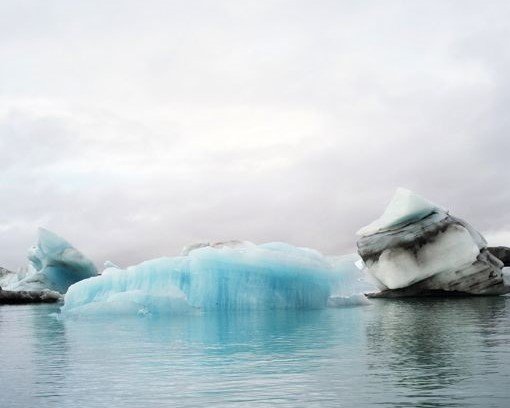
Between November 15, 2019 and February 16, 2020, National Gallery Prague shows the works of Jitka Hanzlova, as part of the exhibition entitled “Silences.”
A Review Article by Pablo Markin.
In this show, Jitka Hanzlová’s images convey different images of silence, as a plural phenomenon. In this exhibition, Hanzlová follows Clarice Lispector, a Brazilian novelist of Jewish-Ukrainian origin, in her reflections on character formation, the representation of silence and and the passage of time. As Lucia Villares argues, for Lispector, her literary characters function as transparent containers for demonstrating large-scale social changes, such as urban transformation, while offering their internalized images. Lispector's works offer a literary representation of the experience of objects as imbued with uncanny, impenetrable, and monolithic presence, while being linked to the critique of modernization as an ideology, a set of imposed ideas. ((Villares, Lucia. "Modernization and the phantasmagoria of commodities in Clarice Lispector's A cidade sitiada." Bulletin of Hispanic Studies, vol. 87, no. 4, 2010, p. 473+. Gale OneFile: Diversity Studies, https://link.gale.com/apps/doc/A244026155/PPDS?u=lirn17237&sid=PPDS&xid=e8085b02. Accessed 14 Nov. 2019.))
Jitka Hanzlova originates from the Carpathian Mountains of the Czech Republic. Hanzlova's work differs from nature photography. "I was looking for the eyes in the forest," says Hanzlova of her forest-related photographs, "but it doesn't work because you cannot see your own eyes." In search of her subjective reality, Hanzlova has been photographing her native Rokytnik in 1990 after the Velvet Revolution. "The first pictures I took were too clear," says Hanzlova of her early forest landscapes.
As Edgar Allen Beem says, where Ansel Adams approached nature as spectacle, Eliot Porter as specimen, and Paul Caponigro as symbol, Hanzlova seeks to represent a hidden presence in her photographs. To capture the seen and the unseen aspects of her subject matter, Hanzlova uses different photographic equipment, such as a 35mm and a 6 x 9 view camera. ((Beem, Edgar Allen. "Into the woods: Jitka Hanzlova explores the unknown within the forest of her childhood home." Photo District News, Nov. 2006, p. 156+. Gale OneFile: Communications and Mass Media, https://link.gale.com/apps/doc/A154694471/PPCM?u=lirn17237&sid=PPCM&xid=a3faa348. Accessed 14 Nov. 2019.))
By Pablo Markin
Featured Image Credits: Jitka Hanzlova, Water, Untitled, 2013–2019 | © Courtesy of Jitka Hanzlova and National Gallery Prague.
[cite]
Posted from my blog with SteemPress : https://signsmodesassemblages.com/jitka-hanzlova-representations-of-silence-and-social-change/
Congratulations @pbmarkin! You received a personal award!
You can view your badges on your Steem Board and compare to others on the Steem Ranking
Vote for @Steemitboard as a witness to get one more award and increased upvotes!
Downvoting a post can decrease pending rewards and make it less visible. Common reasons:
Submit